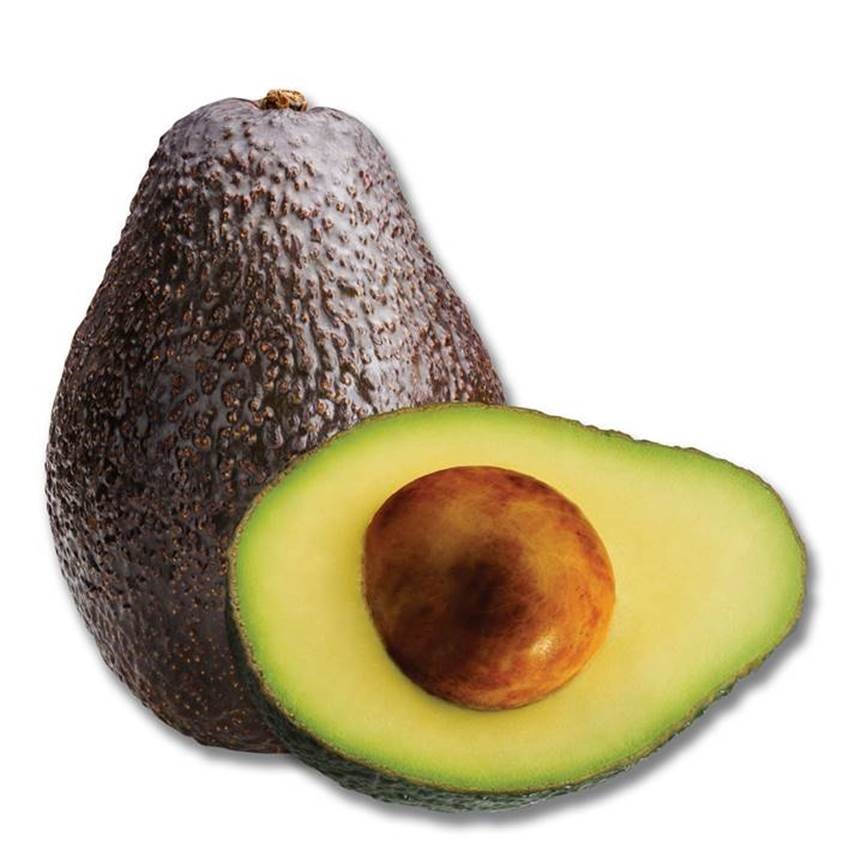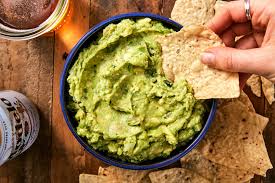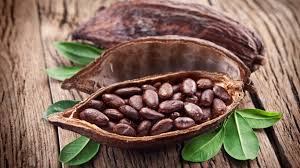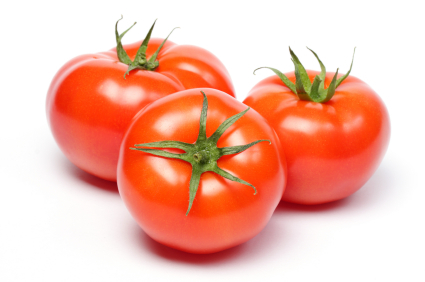In the previous article on Nahuatl and its dominance over huge chunks of Mexico and Central America, we looked into its growing outreach through the last two centuries of the pre-contact times and then its surprisingly even greater reach in the first two centuries of the colonial era. And yet, geographically we remained confined to Mesoamerica alone. But Nahuatl did reach further than that. There are more than a few words of this language that we all use frequently and most of us without knowing it at all.
 The first very popular word that springs to mind is avocado – or ahuacatl/awacatl, its original Nahuatl name. When introduced to this wonderfully tasty and nutritious fruit, the Spanish came to pronounce its name instead of ahuacatl – aguacate, which gradually transformed and ended up in English as avocado. This fruit was one of the staple foods of the Mesoamerican people and was domesticated at first around Central and possibly Western Mexico several thousands years ago, and then spread all over Central and South America, even as far as Peru. Introduced to the continent of Europe from the 17th century and on, it quickly became as a tremendous success as it has been back home.
The first very popular word that springs to mind is avocado – or ahuacatl/awacatl, its original Nahuatl name. When introduced to this wonderfully tasty and nutritious fruit, the Spanish came to pronounce its name instead of ahuacatl – aguacate, which gradually transformed and ended up in English as avocado. This fruit was one of the staple foods of the Mesoamerican people and was domesticated at first around Central and possibly Western Mexico several thousands years ago, and then spread all over Central and South America, even as far as Peru. Introduced to the continent of Europe from the 17th century and on, it quickly became as a tremendous success as it has been back home.
 Speaking of avocado, we cannot forget the extra popular dip, spread or salad called guacamole. Another purely Nahuatl term composed of two words: the previously mentioned ahuacatl (after all, its main ingredient is avocado), which in Spanish came to be pronounced as aguacate, or guacate like in this case. The second word molli means simply sauce in Nahuatl. According to this language’s grammar, when one noun is added to another to compose a new compounded word, the suffix “tl” gets dropped. So, in this case, to compose the word “avocado sauce” they very correctly dropped the “tl” from “ahuaca-tl” and added molli instead, ending up with the term ahuacamolli, which Spanish came to pronounce guacamole, a very popular dish centuries before Mesoamerica came to contact with other continents.
Speaking of avocado, we cannot forget the extra popular dip, spread or salad called guacamole. Another purely Nahuatl term composed of two words: the previously mentioned ahuacatl (after all, its main ingredient is avocado), which in Spanish came to be pronounced as aguacate, or guacate like in this case. The second word molli means simply sauce in Nahuatl. According to this language’s grammar, when one noun is added to another to compose a new compounded word, the suffix “tl” gets dropped. So, in this case, to compose the word “avocado sauce” they very correctly dropped the “tl” from “ahuaca-tl” and added molli instead, ending up with the term ahuacamolli, which Spanish came to pronounce guacamole, a very popular dish centuries before Mesoamerica came to contact with other continents.
 Another purely Nahuatl word we all know and most of us use on a daily basis is chocolate. Xocolatl (“x” is to be read as “sh” when it comes to Nahuatl written in Latin letters) was very popular and very expensive and exclusive dish that only the rich people of Central Mexico could afford. It was made of cocoa beans (yes, the word cacao also comes from Nahuatl, a shorten version of the word cacahuatl) that inhabitants of Yucatan and Guatemala could grow in their backyards but the people of Central Mexico had to import. Thus, the frothy and exquisite-tasting chocolate drink was enjoyed mostly by the nobles or those who could afford such an expensive treat, consumed either sweetened with honey or vanilla, or spiced with ground chili peppers to take the naturally bitter taste out (chili being another purely Nahuatl word of a purely native Mexico product that made its way into most extensive use all around the world).
Another purely Nahuatl word we all know and most of us use on a daily basis is chocolate. Xocolatl (“x” is to be read as “sh” when it comes to Nahuatl written in Latin letters) was very popular and very expensive and exclusive dish that only the rich people of Central Mexico could afford. It was made of cocoa beans (yes, the word cacao also comes from Nahuatl, a shorten version of the word cacahuatl) that inhabitants of Yucatan and Guatemala could grow in their backyards but the people of Central Mexico had to import. Thus, the frothy and exquisite-tasting chocolate drink was enjoyed mostly by the nobles or those who could afford such an expensive treat, consumed either sweetened with honey or vanilla, or spiced with ground chili peppers to take the naturally bitter taste out (chili being another purely Nahuatl word of a purely native Mexico product that made its way into most extensive use all around the world).
 In fact, in Tenochtitlan and other major cities of Central Mexico, cocoa beans were so prized and relatively rare that they were often used as currency as well. The meaning of the word itself is debatable. For a long time it was translated from Nahuatl as “bitter water” – xocol/xocolia, a verb that means “to make bitter/sour”, and atl, a noun that means water. However, today several scholars dispute this claim, arguing that the word xicol is more likely to be a part of the word xocol-atl as well as more grammatically correct: xicol stands for the word xicolli/chicolli, a hooked instrument that is reported to be employed in preparation of the frothy beverage, making it satisfactorily foamy and frothy.
In fact, in Tenochtitlan and other major cities of Central Mexico, cocoa beans were so prized and relatively rare that they were often used as currency as well. The meaning of the word itself is debatable. For a long time it was translated from Nahuatl as “bitter water” – xocol/xocolia, a verb that means “to make bitter/sour”, and atl, a noun that means water. However, today several scholars dispute this claim, arguing that the word xicol is more likely to be a part of the word xocol-atl as well as more grammatically correct: xicol stands for the word xicolli/chicolli, a hooked instrument that is reported to be employed in preparation of the frothy beverage, making it satisfactorily foamy and frothy.
 Chili and tomato/tomatl are additional Nahuatl words and fruits that the Mesoamerican people domesticated and developed, and without which it is hard to imagine our modern-day cuisine at all. As well as peyote/peyotl, chia, vanilla and amaranth, but the last three purely Mesoamerican products are not Nahuatl words and were called differently in this language.
Chili and tomato/tomatl are additional Nahuatl words and fruits that the Mesoamerican people domesticated and developed, and without which it is hard to imagine our modern-day cuisine at all. As well as peyote/peyotl, chia, vanilla and amaranth, but the last three purely Mesoamerican products are not Nahuatl words and were called differently in this language.
 Not so with the fairly popular alcoholic beverage mezcal. This popular drink that spread around the world and made a fair success was not known in its current form before the Spanish conquest. The Nahua people and other Central Mexico dwellers consumed softer alcoholic beverages like octli/pulque made out of fermented agave plant. However, introduced to a distilling process by the Spanish newcomers, this same agave plant yielded interesting results, producing a stronger alcohol the locals called mexcalli – baked agave (metl=agave, ixca=to bake, drop the customary “tl” from metl and we have me-xca-li), which became known to us as mezcal.
Not so with the fairly popular alcoholic beverage mezcal. This popular drink that spread around the world and made a fair success was not known in its current form before the Spanish conquest. The Nahua people and other Central Mexico dwellers consumed softer alcoholic beverages like octli/pulque made out of fermented agave plant. However, introduced to a distilling process by the Spanish newcomers, this same agave plant yielded interesting results, producing a stronger alcohol the locals called mexcalli – baked agave (metl=agave, ixca=to bake, drop the customary “tl” from metl and we have me-xca-li), which became known to us as mezcal.
 Having done with the cuisine, we can now move to the animal kingdom, to words like coyote, which came from a Nahuatl word coyotl, as well as ocelot which came from the Nahuatl word ocelotl. With ocelotl there was a bit of a lost meaning in translation, as in Nahuatl the word means jaguar, but to us it came to introduce a wild cat from the same areas, a beautiful and ferocious feline but not the one in the league with the mighty jaguar, the indisputable king of Mesoamerican forests. In the case of coyote/coyotl, though, there were no misrepresentations or misinterpretations, not at all – it came to English and other languages to represent exactly the same canine it was naming originally.
Having done with the cuisine, we can now move to the animal kingdom, to words like coyote, which came from a Nahuatl word coyotl, as well as ocelot which came from the Nahuatl word ocelotl. With ocelotl there was a bit of a lost meaning in translation, as in Nahuatl the word means jaguar, but to us it came to introduce a wild cat from the same areas, a beautiful and ferocious feline but not the one in the league with the mighty jaguar, the indisputable king of Mesoamerican forests. In the case of coyote/coyotl, though, there were no misrepresentations or misinterpretations, not at all – it came to English and other languages to represent exactly the same canine it was naming originally.
Another word that comes to mind is an English word shack. There are some who claim that it came from the Nahuatl word xahcalli (not to forget that the “x” is to be read as “sh”), with the noun xahtli meaning thatch (not to forget that the suffix “tli” drops off when combined with another word) and calli meaning house, together combining xah-calli – a thatch house, with its original meaning not very different from the meaning of the word shack in English as we know it.